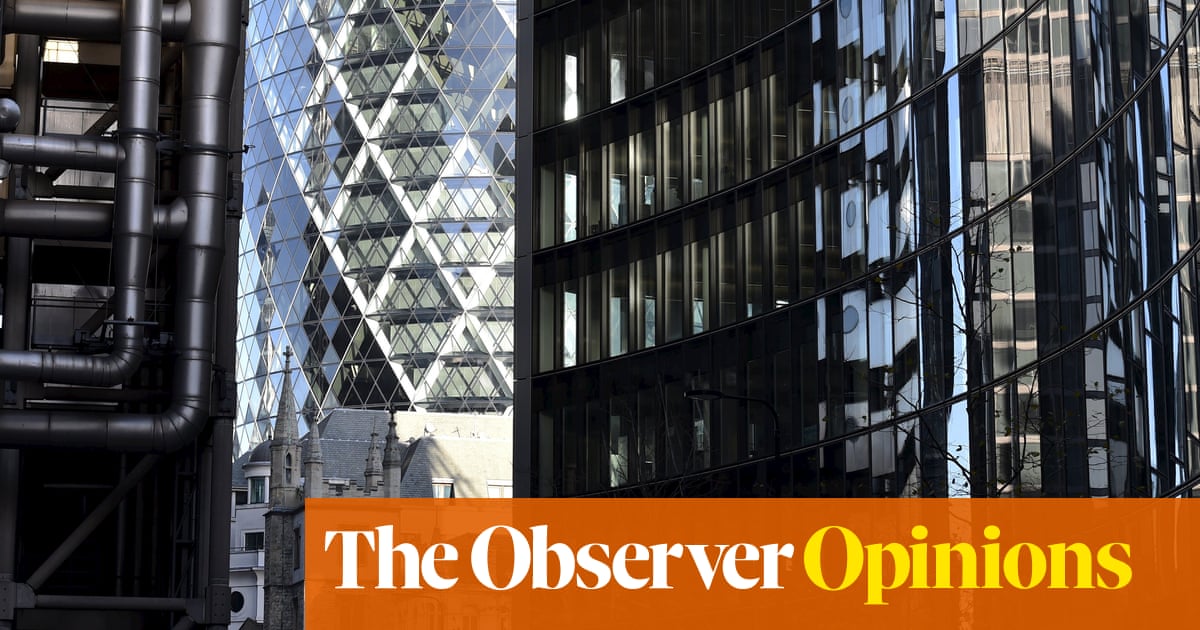
The City of London has survived fire and plague in its centuries-long history. But the coronavirus pandemic has emptied its streets of office workers, shoppers and tourists, leading some to question whether the Square Mile will ever return to the way it was before Covid.
The first working week of the new year has done little to break the silence in the capital’s financial district. Even if the vaccines programme allows restrictions to be lifted in the spring, few expect office staff to spend the entire working week at their desks in future.
Hybrid working, where staff split their time between their office, home or another location, is expected to double following the pandemic, according to research from commercial property firm Cushman & Wakefield, and George Washington University in the US.
Eight in 10 firms are expected to adopt this approach in future, up from three in 10 pre-Covid, while an “office-first” working culture will be promoted by just 10% of firms surveyed.
However, company leaders agree that workplace culture, innovation and creativity inevitably take a hit when people work entirely remotely.
This view was shared by colleagues Joe Trotti and Wayne Hawkins, partners at insurance brokers McGill and Partners, previously based at the firm’s office near Leadenhall market.
When the Guardian visited the market before Christmas, Trotti and Hawkins had made a rare trip to London for a meeting.
Neither was convinced that remote working is a long-term replacement for meeting up in real life.
“With each other it’s not so bad,” said Hawkins, “but when you are trying to talk to clients you need that face-to-face contact.”
“People miss the human side, you can’t get away from it. The business is going well, but people are keen to get together and reconnect,” said Trotti.
Over half a million people usually work in the Square Mile financial district, yet only 9,000 people live in the area, meaning local businesses are reliant on passing trade from office workers.
“What we see is a tale of two cities,” said Catherine McGuinness, policy chair at the City of London Corporation, the local authority for the district.
“Many of the professional services firms pivoted well to working remotely, but these small supporting firms depend on footfall and until footfall comes back, they are really going to struggle”.
By the time restrictions are expected to lift in the spring, those City service firms – from grab-and-go sandwich shops to barbers and dry cleaners – will have endured the best part of a year with temporary closures and little passing trade when allowed to be open.
In normal times Kevin Goodman, acting manager at Blades barbers and hairdressers, would have expected to do up to 17 haircuts a day during a busy in the pre-Christmas rush. Instead, on a weekday in December, he had just one client booked in for the entire day.
For many companies, 2020 turned out to be a year of false dawns. In the summer, after the first lockdown restrictions were eased, the government urged businesses to return to their offices to help city centres recover.
“In September, the City was starting to come back, you could see it improving, then Boris Johnson told everyone to work from home again,” said Goodman, “It is disheartening and soul-destroying.”
He added “In the 2008 crash we saw a dip, and an increase in the time customers left between cuts, but now people have been told not to come to the City.”
The pandemic emptied out city centres around the UK, and the world, yet few more than the financial heart of the capital, the City of London.
The persistent lack of people in the district is illustrated by stark figures, collected from mobile location data from smartphones.
Footfall at retail and leisure locations in the City of London was 83% lower in the middle of December, even before the region entered tier 4 restrictions, compared with levels measured pre-pandemic between 3 January and 6 February, according to Google Mobility Reports.
Public transport use in the area was 71% below regular levels, and workplaces were 60% quieter.
The City witnessed the most significant drop in activity in recent months, more than was registered in the City of Westminster, home to the retail, leisure and cultural attractions of the West End, or the borough of Tower Hamlets, where the Canary Wharf financial district is located.
January’s new England-wide lockdown closed the underwriting room at Lloyd’s, the world’s biggest insurance market, for the second time since the start of the pandemic, and only the second time in its history. It usually hosts 6,000 staff.
The firm’s chairman, Bruce Carnegie-Brown, expects coronavirus to change traditional working practices for good.
“We need to be quite adaptive, quite flexible and quite specific, job role by job role,” Carnegie-Brown said.
“If you are a broker dealing with global clients and the remote working and the digital placement systems work, why do you need to be in the office physically unless there’s a specific negotiation?”
Maurice Duckett, branch manager at suit and menswear retailer Roderick Charles, who has spent a quarter of a century in the Square Mile, fears the changes to the City may become permanent.
“It’s a very personal business, and it’s heartbreaking really,” Duckett said, speaking to the Guardian while the shop was still trading during December.
He added that he has missed interaction with customers as much as their business during what he called “a nightmare nine months”.
“I personally don’t think it will ever be the same. These companies have discovered that staff can work from home, why pay big rents if you can do without,” he said, adding that one of the firms based opposite the shop had emptied its office and moved out in December.
Firms that are eyeing a permanent shift to flexible working, and whose property leases have allowed it, have seized the opportunity to shed space and cut costs.
Advertising and marketing firm WPP said it had merged more than 100 offices during 2020 and was planning to cut its office space by 15%-20%.
The pandemic also prompted a move for consultancy Cavendish Engineers after 16 years in two floors of an office building on the edge of the City.
“We decided an office with huge overheads was no longer needed,” said Rachel Burrell, Cavendish’s director of business administration, adding that the firm’s engineers often visit clients’ sites, while her team of eight administrators was previously office-based.
The firm decided instead to purchase memberships at flexible workspace provider Fora for the eight staff who need a permanent desk, while day passes allowing access to the building will be added as required for other employees.
London office vacancy rates are forecast to hit 10% in the first half of 2021, according to property consultancy Colliers International. It also anticipates average rents in the City will fall by almost 10% over the next year, from current levels of £58 per square foot.
It isn’t just wealthy private landlords who will feel the loss of income from lower rents or empty properties. Many commercial buildings in city centres are owned by pension funds or insurance firms, which have long relied on them for a stable source of income – which then slowly trickles down to ordinary citizens.
Businesses that promise increased flexibility following the crisis may also be responding to the demands of their staff.
Almost half (45%) of City workers said that they want to continue working from home after the pandemic, as it has improved their work-life balance, according to a survey by accountancy consultancy Theta Global Advisors.
More than half (57%) of London workers who responded said they did not want to return to full-time office working in future.
For those workers who do want to return to their desks, for at least part of the week, the City had planned a celebration in the spring to welcome people – and their spending power – back to the area’s offices, bars, restaurants and shops.
That may be on hold now, but at the City of London Corporation there is confidence that the City will emerge from the pandemic shaken, but not shattered.
“We are expecting this to be a catalyst for change, we are very confident about the City’s long-term prospects for the future. People are really keen to come back to have hubs, where people congregate, but they will be using their offices in different ways,” said Catherine McGuinness at the corporation.
Whenever in 2021 employees do return to their corporate headquarters, in all likelihood more than a year after they left, they may have to contend with more than they bargained for: rodents.
Sightings of rats by pest controllers soared by 78% in October, while those of mice increased by 63%, according to the British Pest Control Association. In the absence of humans, rodents may have learned to make some offices their home, and will still be there when the humans return.












